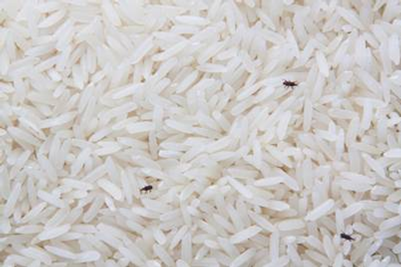Introduction
The use of veterinary drugs may be necessary for the treatment of diseases among food-producing animals. However, sometimes these drugs may remain in the animals and subsequently, be introduced into our food. This article will shed more light on veterinary drug residues in food and what we can do to reduce our exposure to veterinary drugs in food.
What are veterinary drugs and why are they used when rearing food-producing animals?
Food-producing animals can suffer from diseases and it may be necessary to treat these diseases with appropriate drugs to ensure animal health and welfare. If these diseases are not treated, it can potentially affect food production. Therefore, appropriate use of veterinary drugs in food animals, where necessary, is important in ensuring that our supply of food animals is both resilient and safe.
The major classes of veterinary drugs include antibiotics and antiparasitic drugs.
Antibiotics is the biggest group of veterinary drugs and are used widely to treat bacterial infections in food animals. Some examples of antibiotics include fluoroquinolones, penicillins, tetracyclines and sulfonamides. Antiparasitic drugs are used to manage and treat diseases caused by parasites. Antiparasitic drugs are classified based on their applications. Examples include avermectins used to control worms and pest insects as well as benzimidazoles used to treat nematode and trematode in the animal’s digestive systems.
Why are veterinary drug residues found in food?
Veterinary drug residues can be found in animal food products such as meat, eggs and milk, when poor practices are adopted when rearing food animals. The residues can be of the drug itself or metabolites formed when these drugs are broken down in animals. Some contributing factors to veterinary drug residues in food include:
- Usage of antibiotics when it is not necessary (e.g. on healthy animals)
- Not following manufacturer’s instructions (e.g. administering wrong dosage, route, or types of veterinary drugs)
- Administering banned drugs which are harmful to humans
- Not adhering to withdrawal periods (time taken for a drug to be broken down in animal tissue to a safe, acceptable level) prior to slaughter
- Cross contamination of animal feed and water with drugs
Do these veterinary drug residues in food pose any health concern?
The misuse of veterinary drugs in food-producing animals could result in deposition of drug residues in the tissues and organs. When the animal is slaughtered and processed into food, or when it produces eggs or milk, these residues enter the food chain.
The consumption of food containing excessive levels of veterinary drug residues, may have adverse effects on human health, such as allergies in some individuals. It can also potentially lead to the development of antimicrobial drug resistant microorganisms in humans. Antimicrobial resistance (AMR) is a serious threat to public health around the world as disease causing microbes can become resistant to antimicrobials. As a result, humans and food animals will have fewer and more limited treatment options when they are infected with antimicrobial resistant microorganisms. The World Health Organization (WHO) has identified AMR as one of the top 10 public health threats facing humanity, and launched the Global Action Plan on AMR in 2015, to spur global efforts.
How does SFA manage risks associated with exposure to veterinary drugs due to consumption of food?
SFA adopts a risk-based approach to food safety, with an integrated system to ensure that both imported and locally produced food is safe for consumption. Foods available in our market are subjected to SFA’s inspection and surveillance programme. We have in place control measures from farm to fork such as source accreditation inspections and sample testing.
As livestock, meat and eggs are more likely to carry animal and food-borne diseases, they can only be imported from accredited establishments from approved sources. This means that establishments must meet our food safety requirements and must be located in countries with a robust food safety regime and animal health surveillance before they can export to Singapore. Local farms are similarly required to comply with food safety requirements, and are regularly inspected by SFA.
SFA has established maximum residue limits (MRLs) for veterinary drugs under the Singapore Food Regulations. For veterinary drugs, the MRL refers to the maximum residue concentration allowed in a food product obtained from an animal due to the administration of veterinary drugs to the animal. The MRLs adopted by SFA are based on recommendations by the Codex Alimentarius Commission[1]. SFA regularly reviews and updates the MRLs in the Food Regulations to safeguard consumer health and to meet the changing needs of the food industry.
Both local and overseas farmers are required to comply with the established veterinary drug residue standards. They must observe the applicable withdrawal periods for approved veterinary drugs prior to selling the animals’ products for food. Veterinary drugs not listed under the regulations with established MRLs should not be used on animals. Food importers must also be licensed by SFA and are required to source and import food from SFA-accredited countries and establishments.
Samples are taken from both imported and locally produced food and tested for a wide range of food-borne hazards such as chemical contaminants (including drug residues) and microorganisms (e.g. harmful bacteria like Salmonella) and veterinary drugs.
Food which are found to be non-compliant with the established standards are not allowed for sale. SFA may also suspend the implicated source farm(s).
What are some measures that the industry can take to reduce veterinary drugs in food?
The industry has a responsibility to ensure food safety. Veterinary drugs are important for the treatment of animal diseases but must be used responsibly and only when necessary. As such, farmers should
- Implement good animal husbandry practices (e.g. good biosecurity measures, use of alternatives such as vaccinations). Good animal husbandry practices help in preventing and managing diseases, thereby reducing the need for veterinary drugs.
- Adopt farm quality assurance standards or get certified to such standards. Certification Scheme for farm quality assurance standards such as Good Aquaculture Practices for Fish Farming (GAP-FF) and the Singapore Quality Egg Scheme (SQES) certify farms that adopt best practices to ensure the production of safe and quality food.
What can consumers do to reduce exposure to veterinary drugs in food?
Food can be contaminated anywhere along the food chain. While SFA continues to vigilantly regulate, monitor and enforce to ensure food safety, consumers have a part to play too.
Here are some tips to reduce your exposure to veterinary drugs in food:
- Purchase food from SFA-licensed retailers
- Consume a variety of food to avoid exposure to only specific types of contaminants which can be veterinary drug residues



